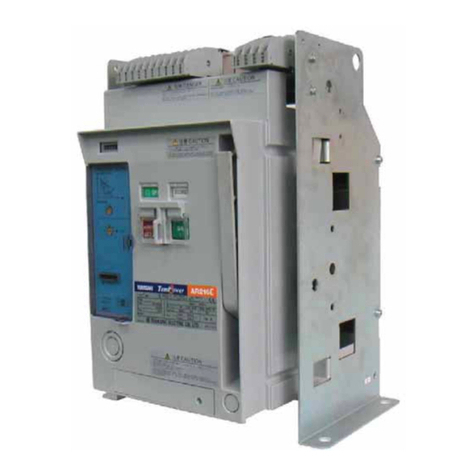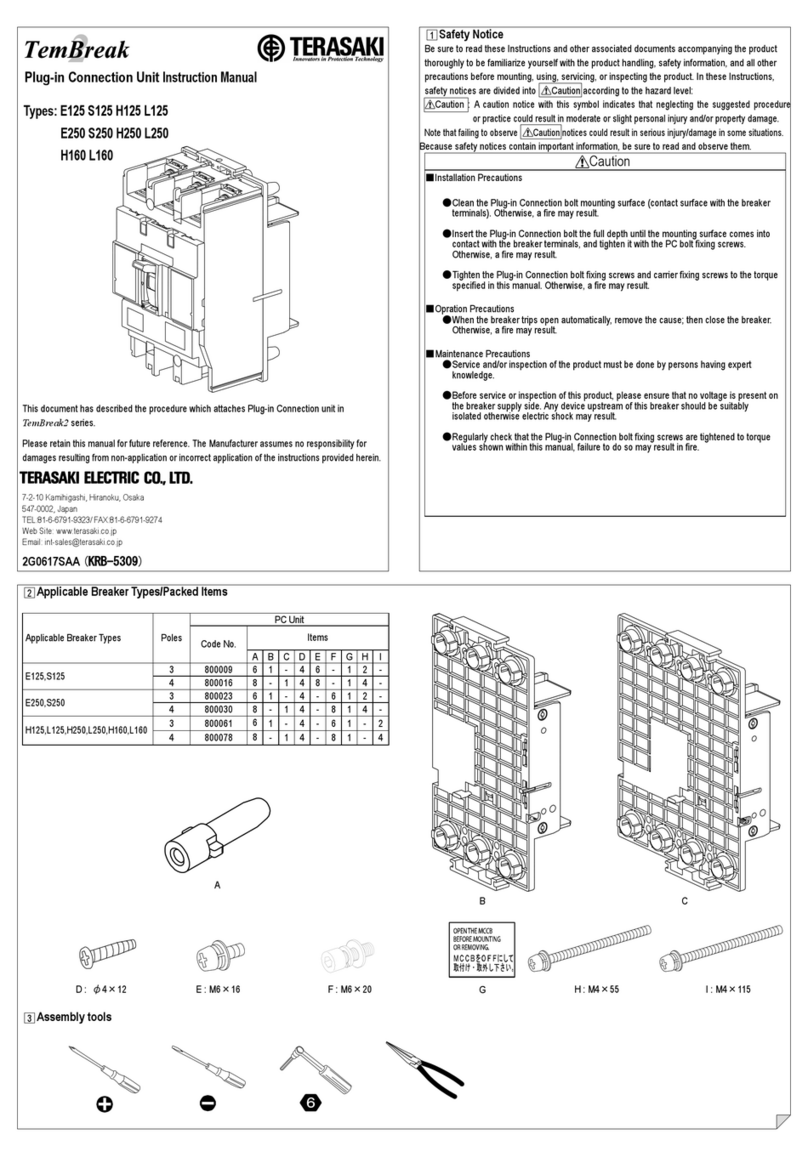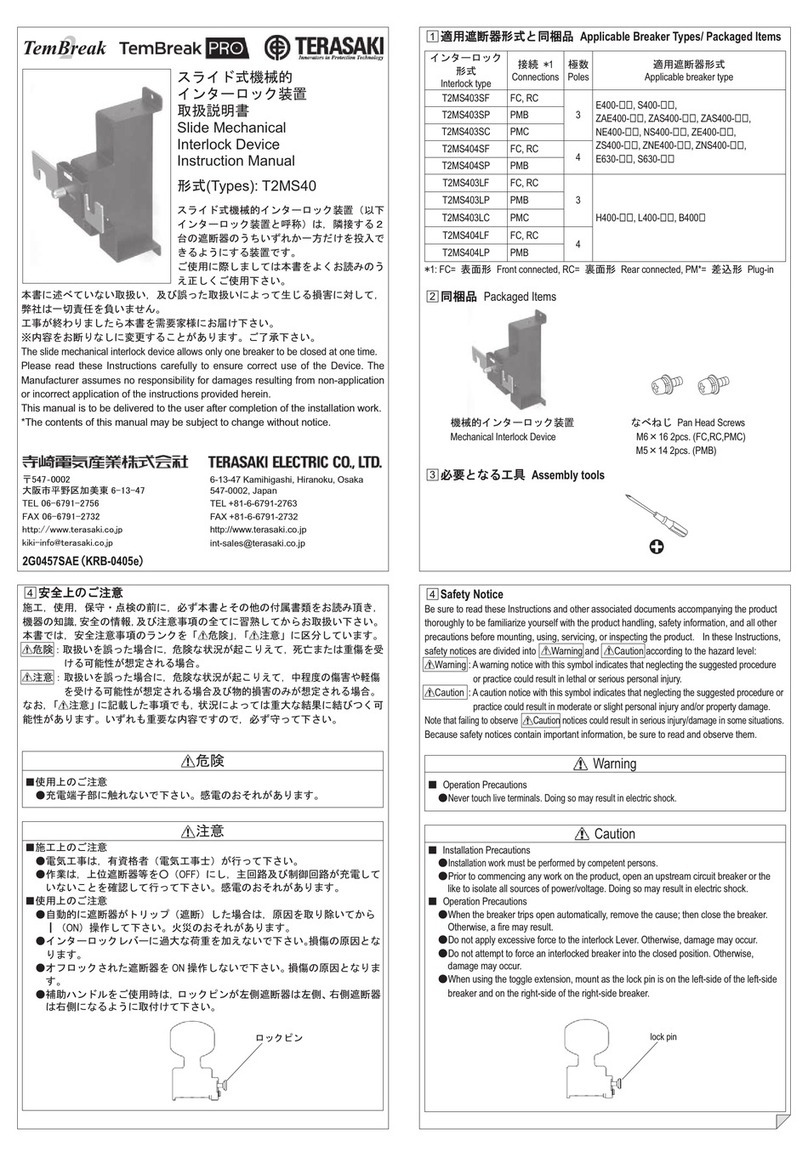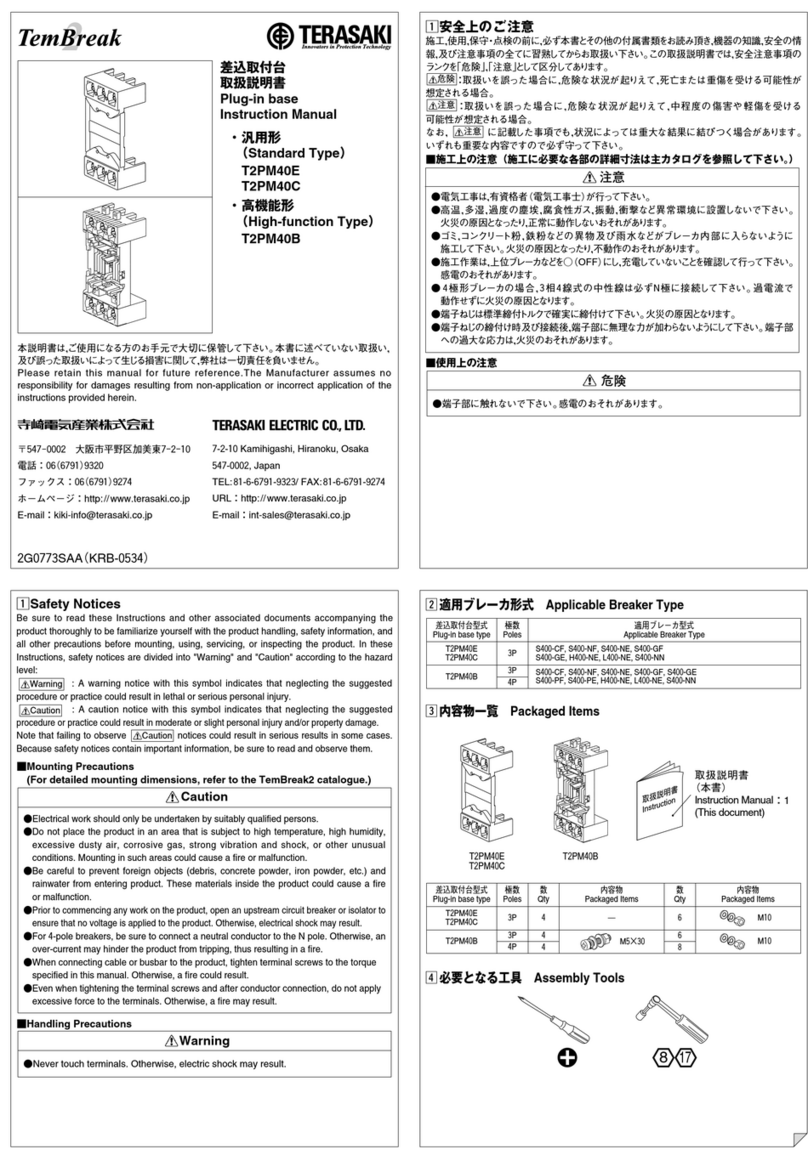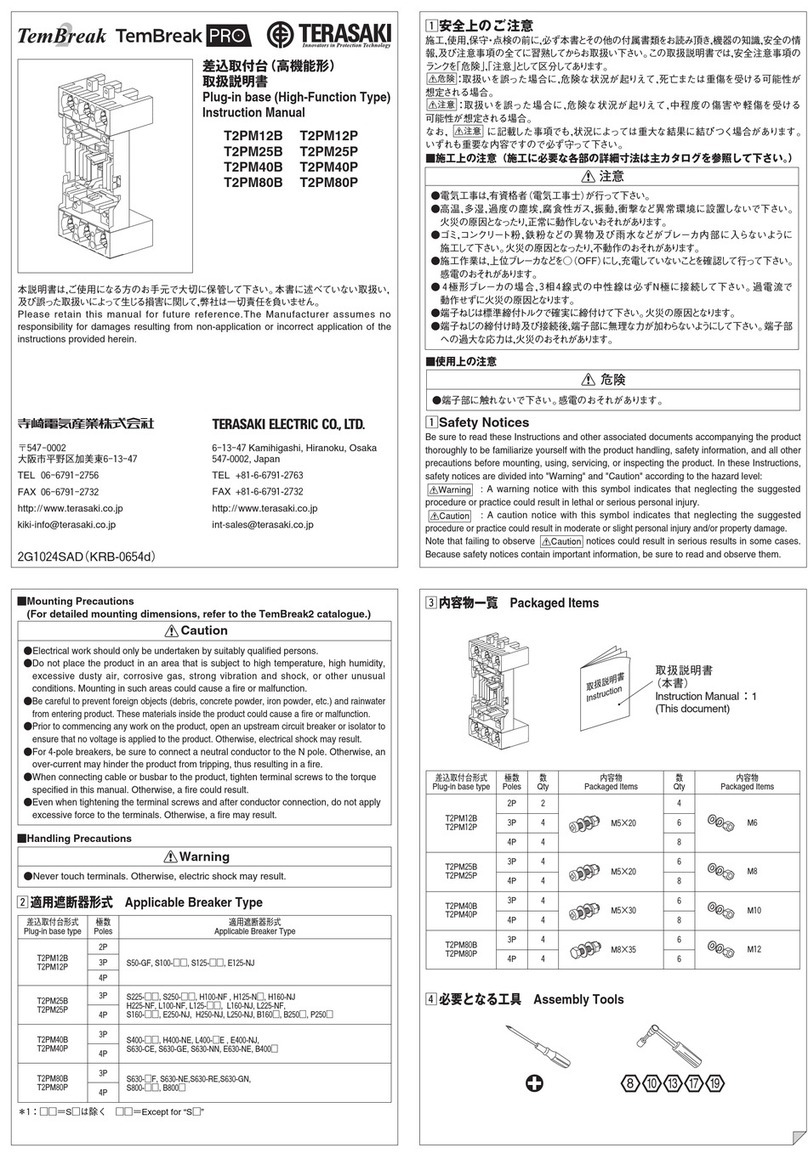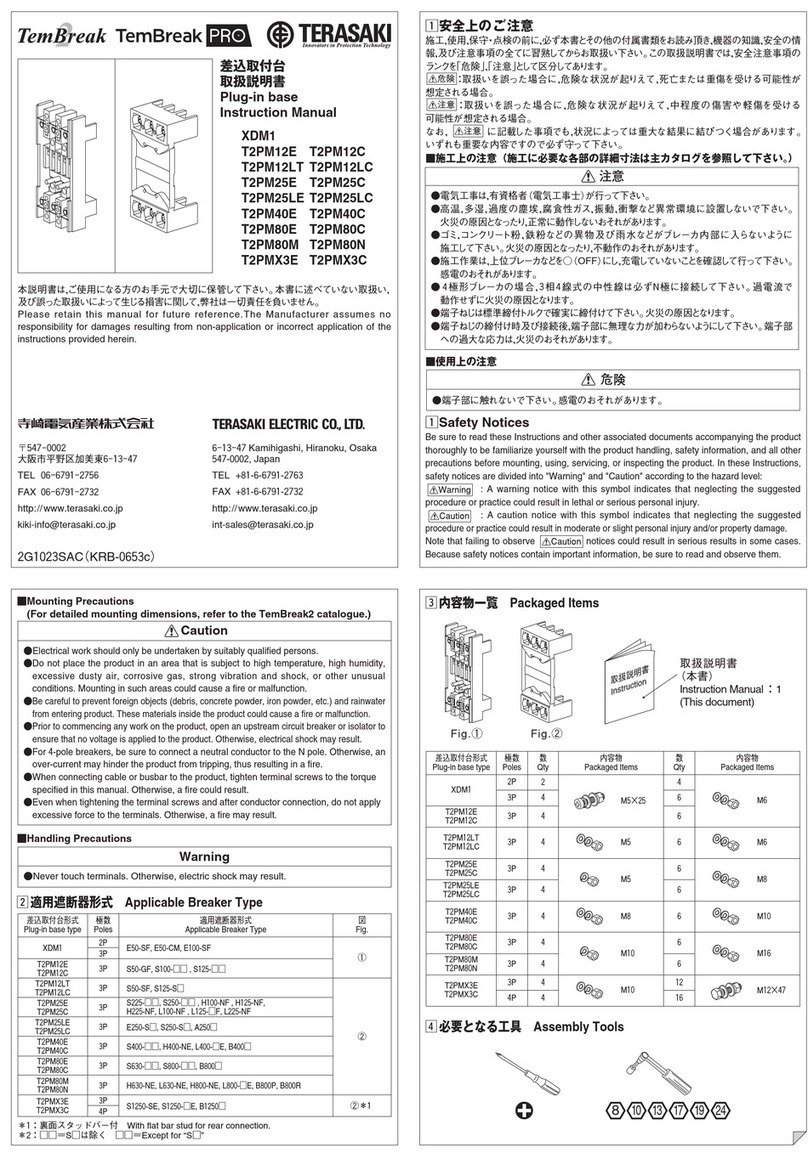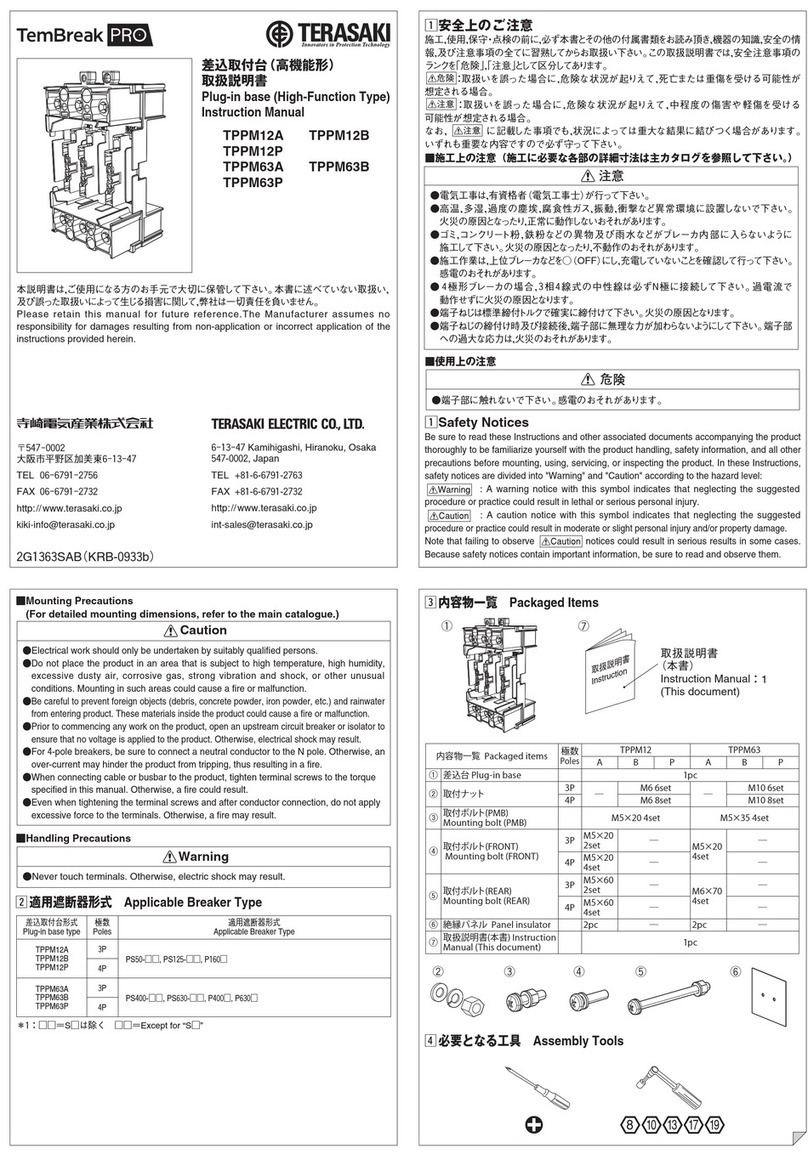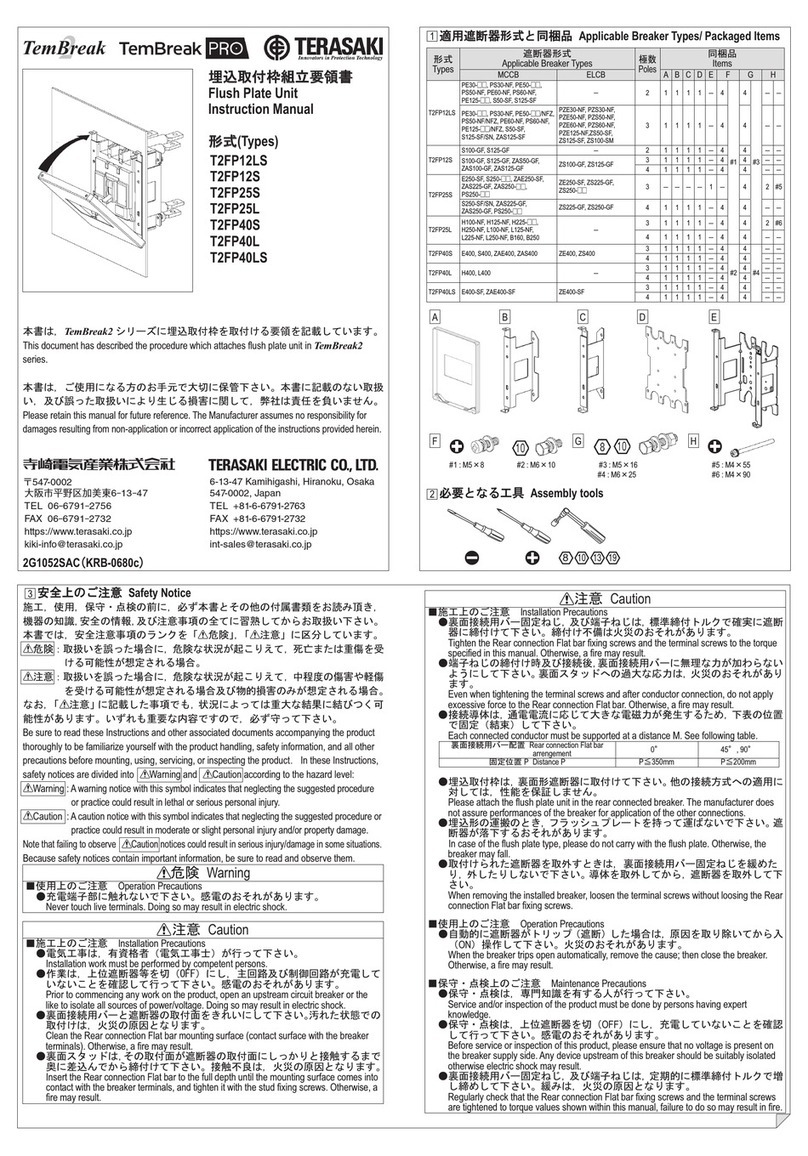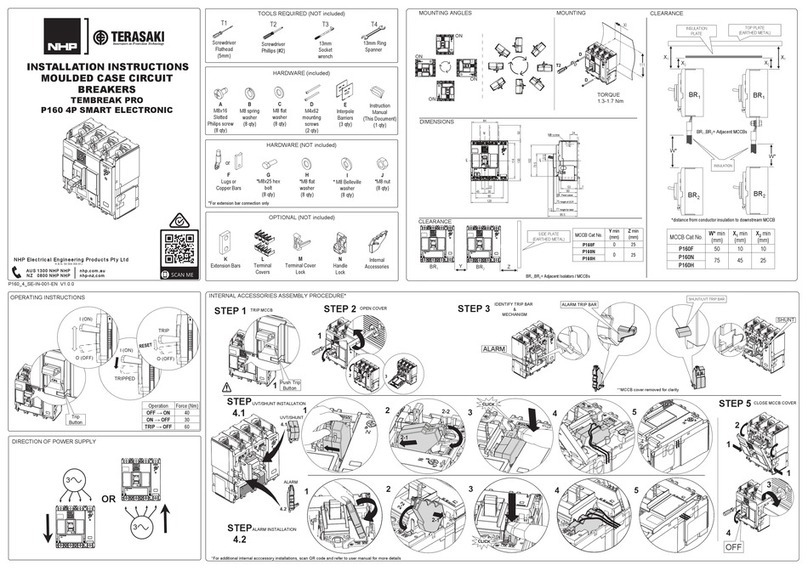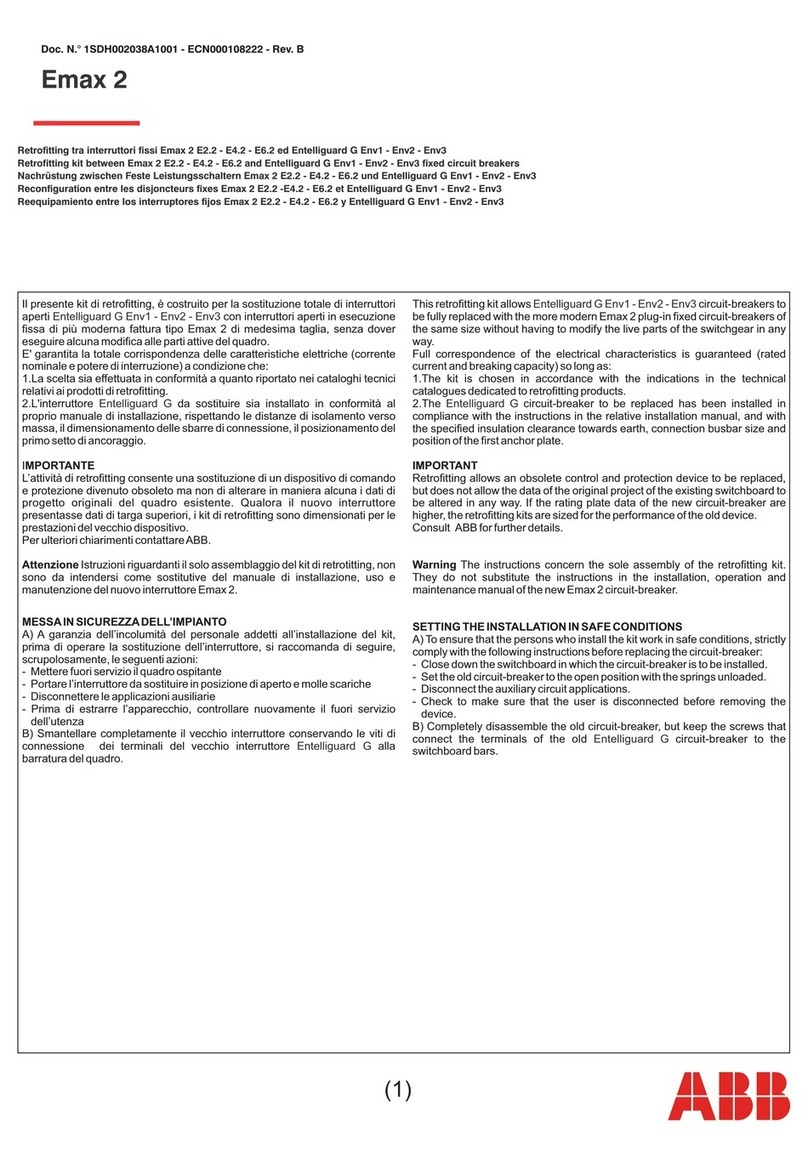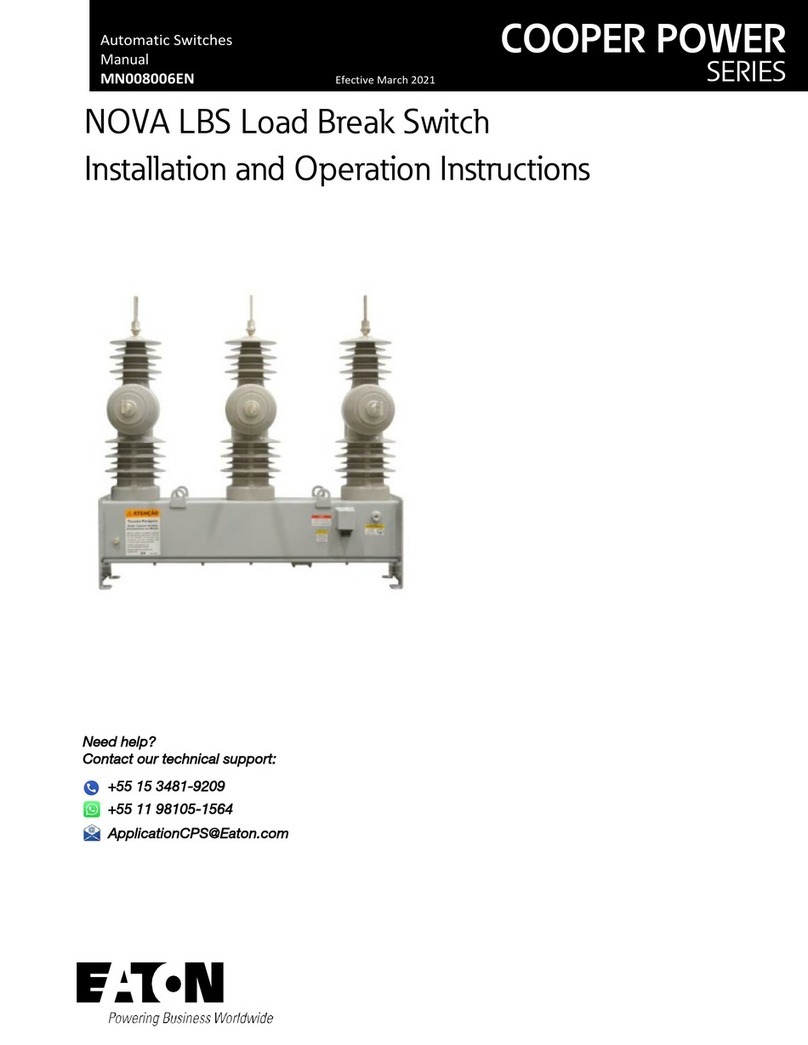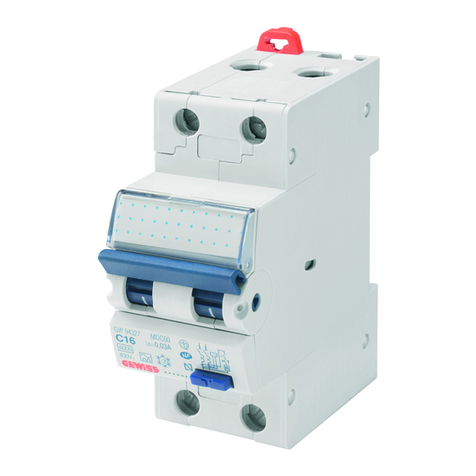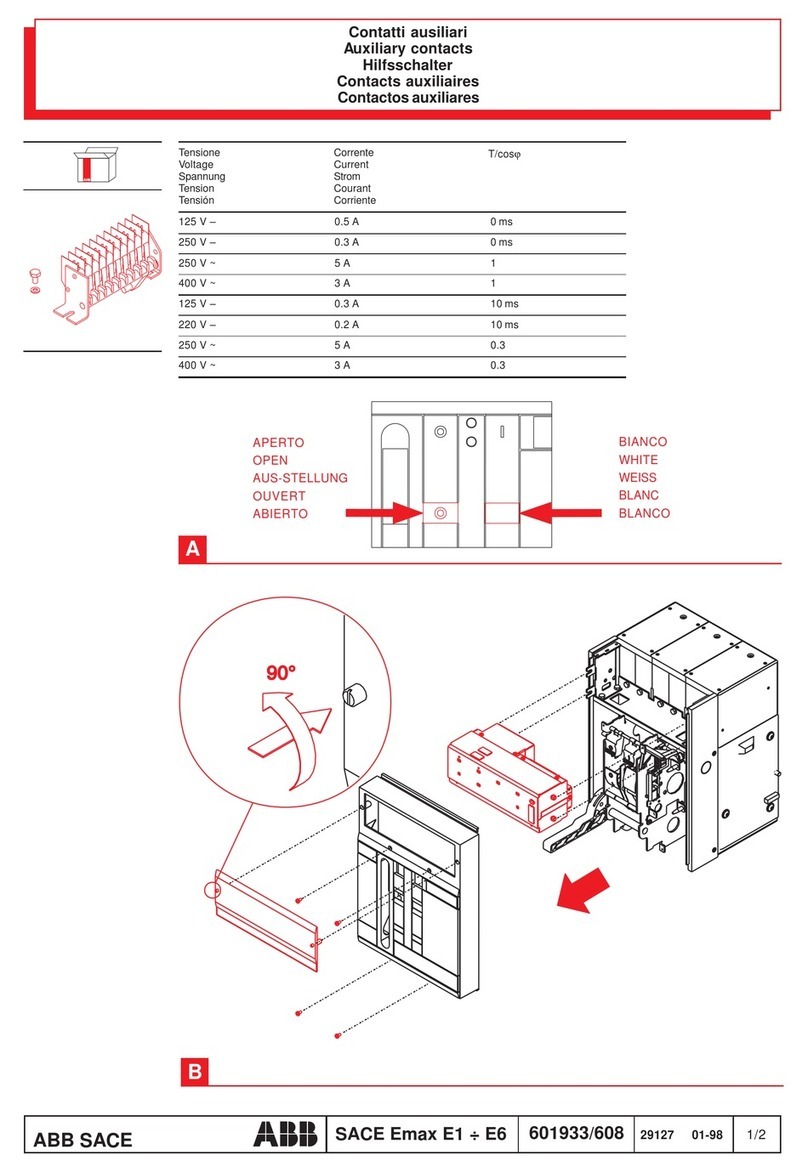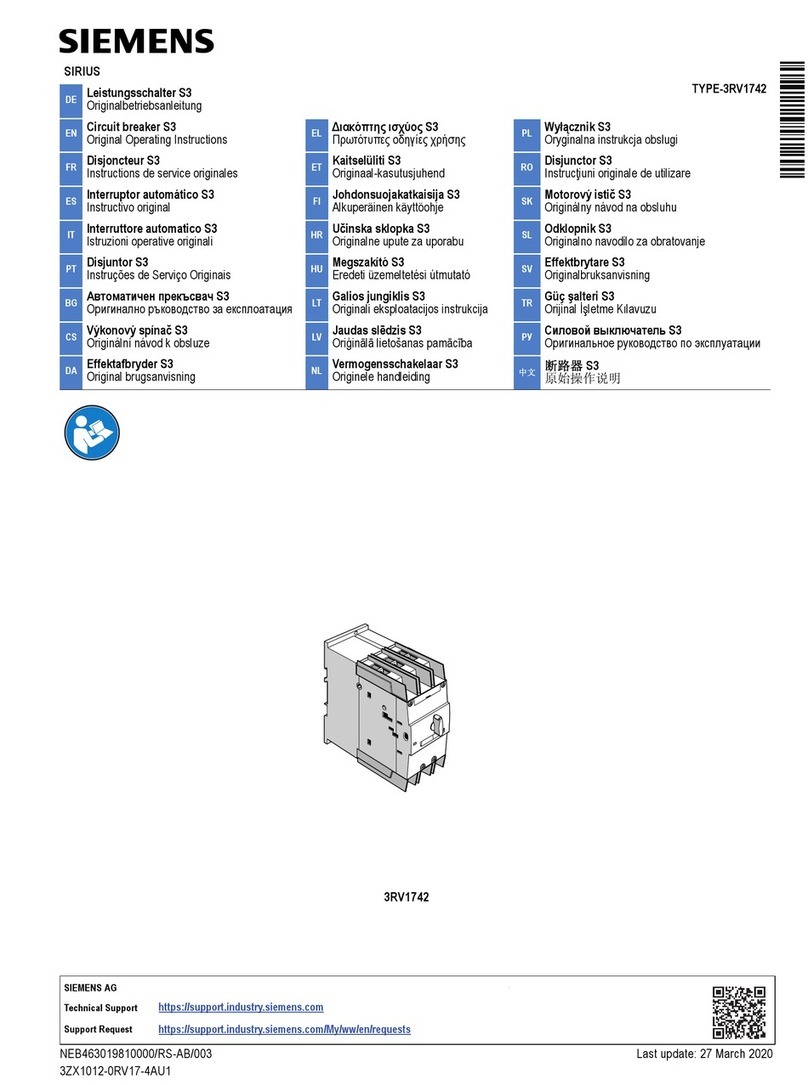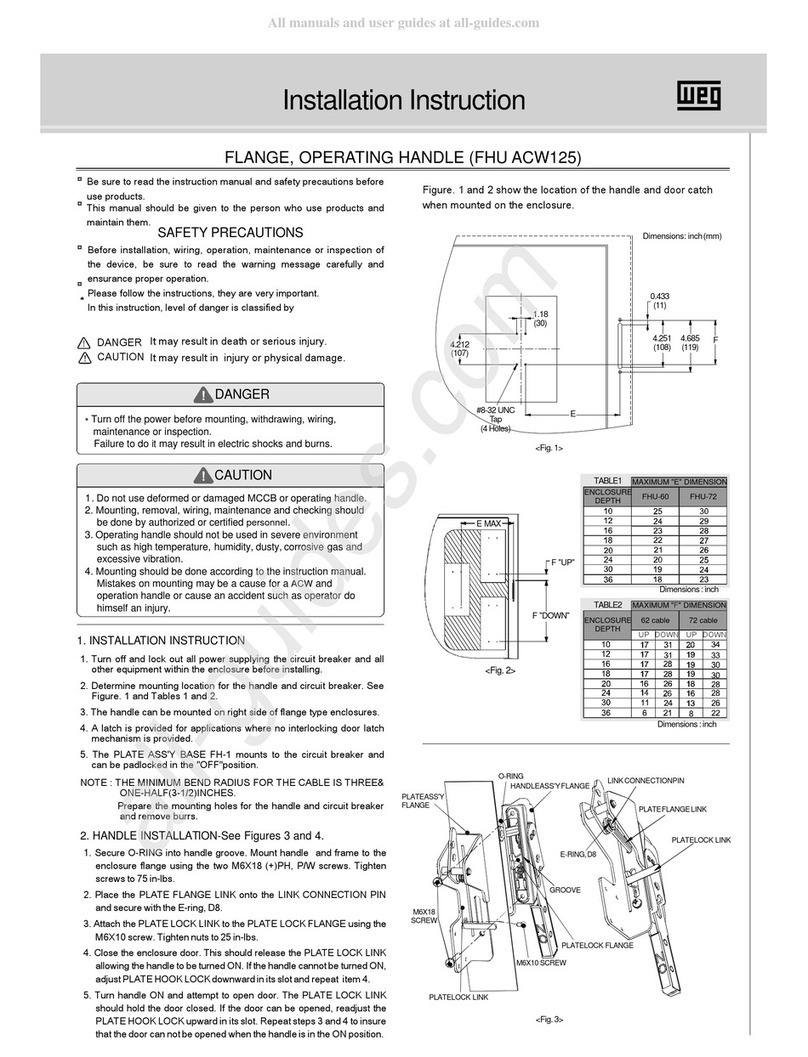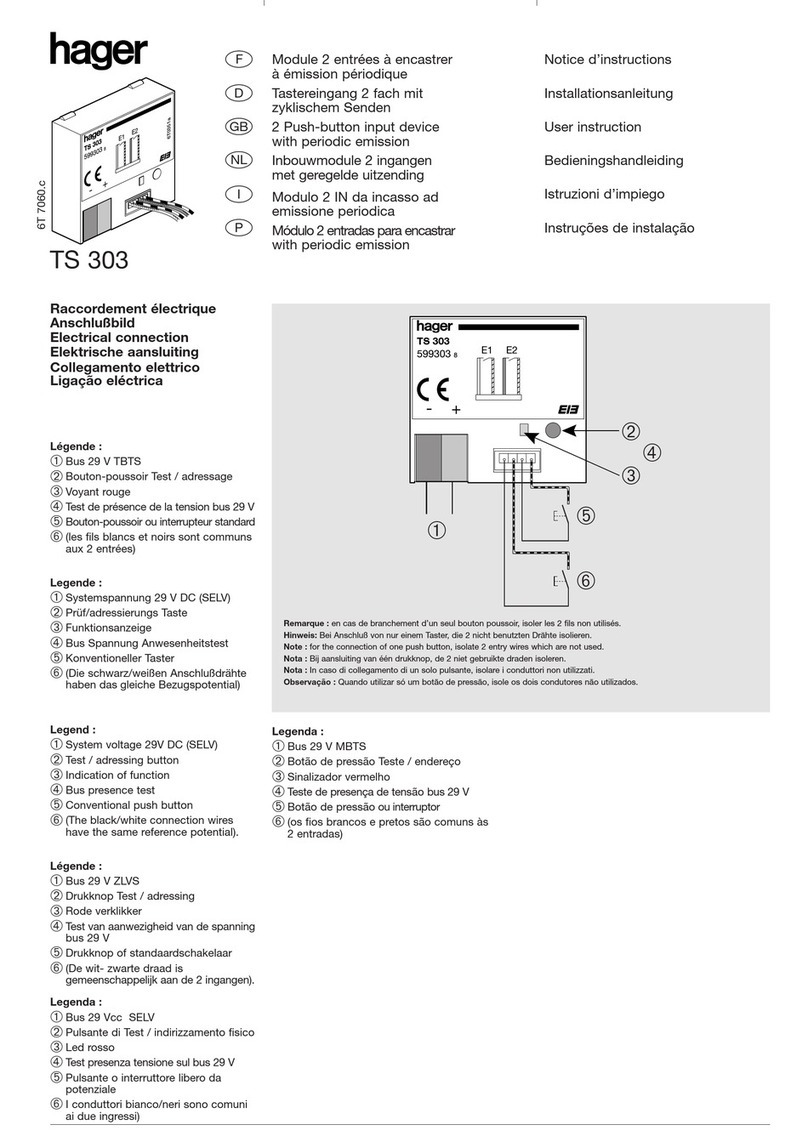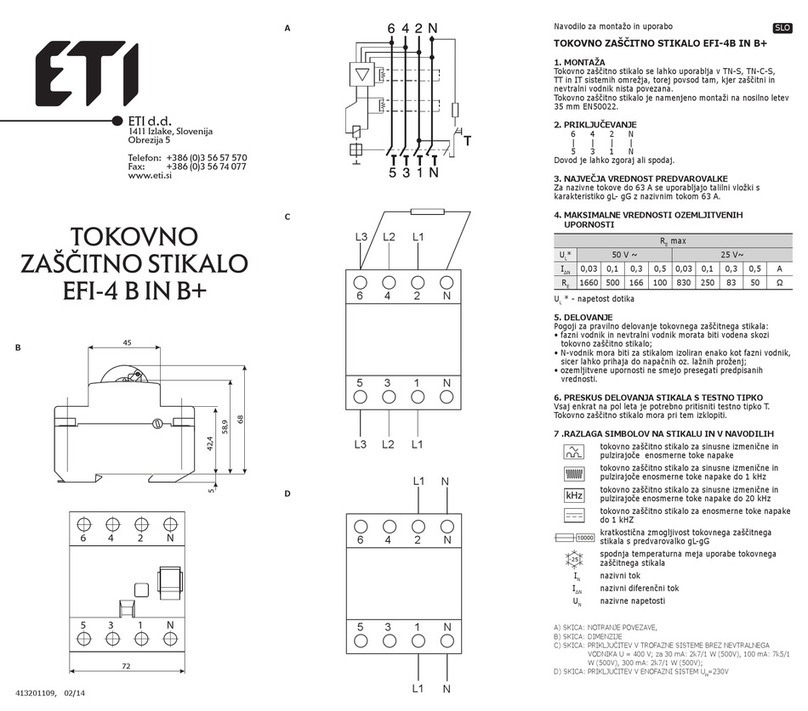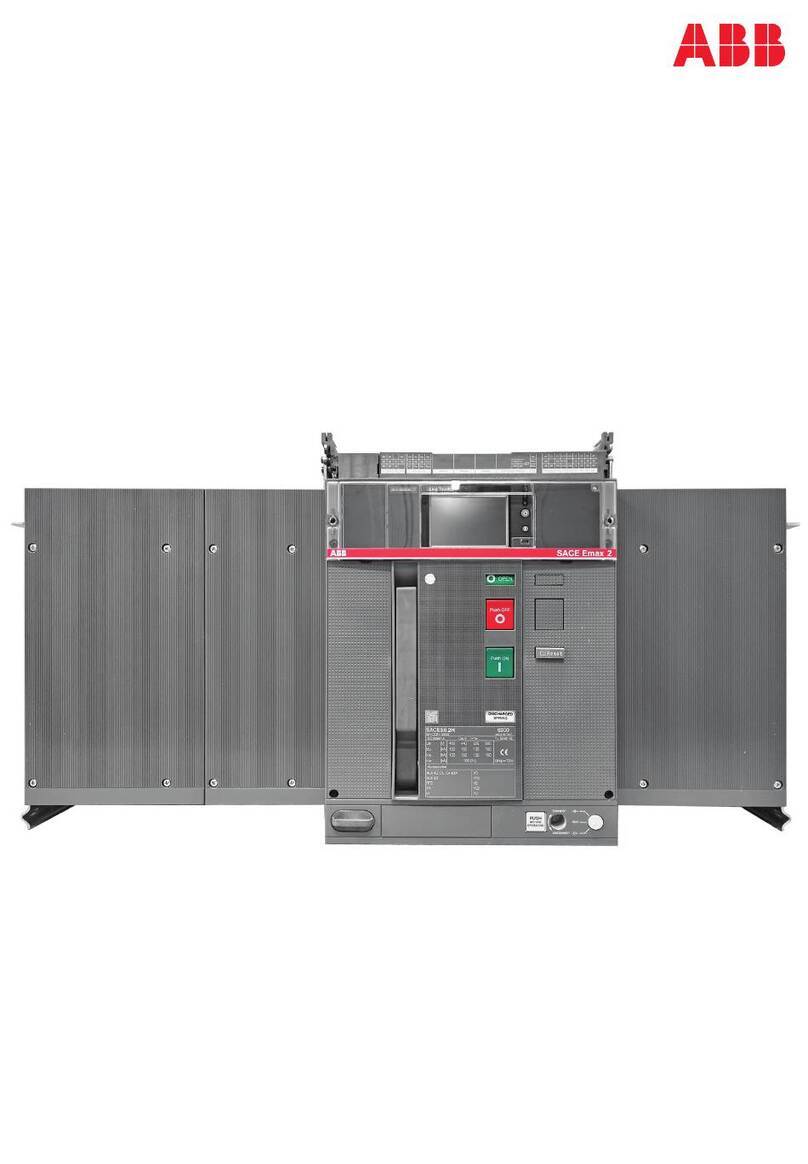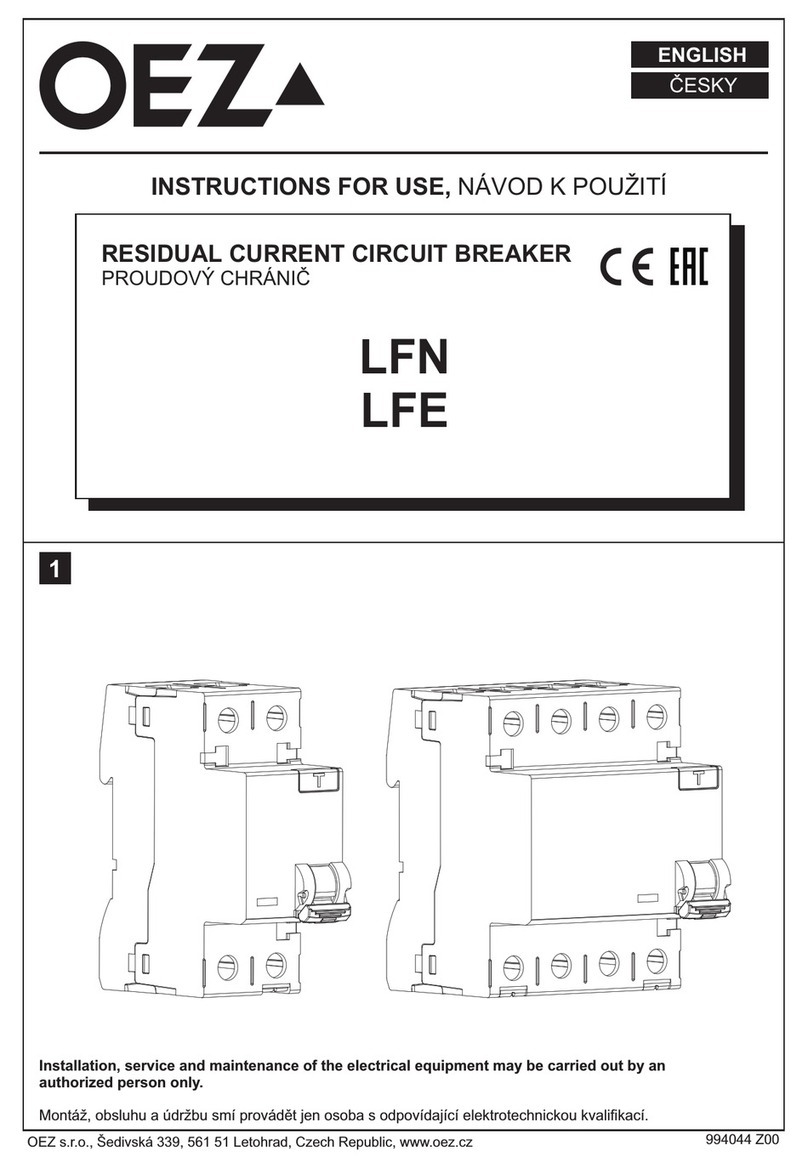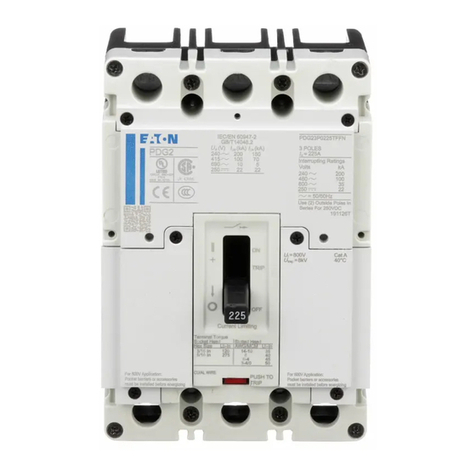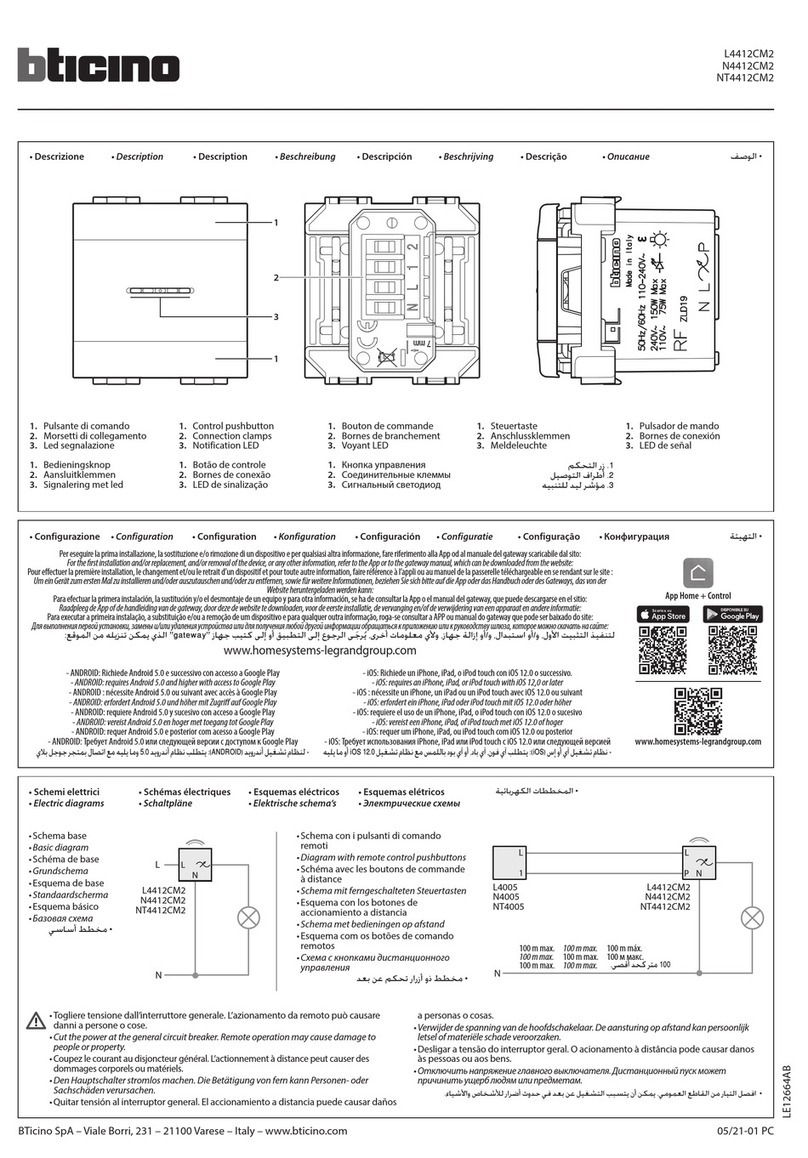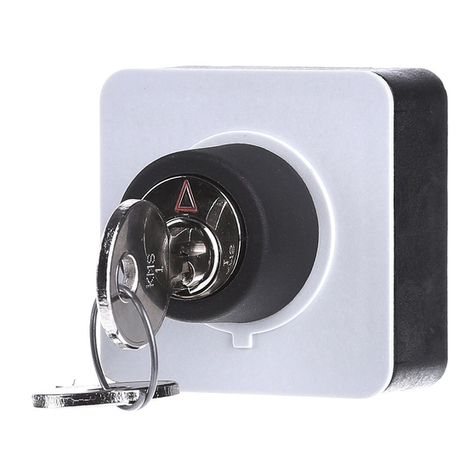
76
Remote Communications
Protocols
(optional)
Data communications via Modbus, an open network, are sup-
ported.
Energy Measurement
I, V, kW, MWh, kVar, cosø, frequency
Intelligent Fault Analysis
Status, fault type, fault size, tripping time, fault history
Maintenance Information
Trip circuit supervision, contact temperature monitoring.
For details please refer to page 12.
For other protocols please contact terasaki.
Contact temperature
monitoring function (optional)
This function monitors the temperature of the ACBs main con-
tacts. An alarm indicates when the temperature exceeds 155°C.
Continuous monitoring of the contact temperature provides
valuable input for preventative and predictive maintenance pro-
grams.
Two channel pre-trip alarm
function
(optional)
This function can be used to monitor and switch on additional
power backup to feed critical circuits. For example, the function
can be set so that when a pre-trip alarm is activated, an emer-
gency generator starts to ensure a constant supply. This fea-
ture is only available on some AGR22B/31B OCR models with
a generator “S” characteristic.
N-phase protection
function (optional)
In 3-phase, 4-wire systems that contain harmonic distortion,
the 3rd harmonic may cause large currents to flow through the
neutral conductor. The N-phase protection function prevents
the neutral conductor from sustaining damage or burnout due
to these large currents. Available in all OCRs except for gen-
erator “S” characteristic types.
Ground fault trip
function
This function eliminates external relays to provide a ground
fault protection to TN-C or TN-S power distribution systems on
the load side. Ground fault protection on the line side is also
available as an option.
Advanced L.C.D. display,
Over Current Relay
The AGR-31B OCR comes standard with an LCD display. It
can monitor and indicate phase currents, voltages, power, en-
ergy, power factor, frequency, and more. For features refer page
29.
Features
1
For general feeder circuits (R-characteristic)
For generator protection (S-characteristic)
For general feeder circuits (L-characteristic)
TemPower2
provides positive protection for electric power systems.
The
TemPower2
series is equipped with an RMS sensing over-current
release (OCR) having a wide range of protection functions and capabilities.
Enhanced OCR with LCD- ‘Analyser’
Type AGR-31B.
Standard OCR with LCD-‘Ammeter’
Type AGR-21B,22B.
Standard OCR with adjustment dial
Type AGR-11B.
Backlit LCD installed
Backlit LCD installed
Overload protection
Adjustable from 40–100% of rated current. True r.m.s detec-
tion up to the 19th harmonic, a distant vision for the competi-
tion who rarely see past the 7th. Neutral protection for all those
Triple-N harmonics, such as 3rd, 9th and 15th. Also in case we
forgot to mention, a “thermal memory” ia available on the
AGR21B/31B.
Reverse power trip function
(S-characteristic)
This feature provides additional protection when paralleling
generators. The AGR22B/31B OCR for generator protection
with the reverse power trip function, negates the need for in-
stallation and wiring in an external reverse power relay. This
feature is available using an AGR OCR with a generator “S”
type characteristic only.
Earth leakage trip
function
Used in conjunction with an externally mounted Zero phase
Current Transformer (ZCT), this function provides protection
against leakage to earth of very small levels of current. Trip or
alarm indication, and contact output is available to enhance
the level of system protection.
Phase rotation
protection function
This function detects the negative-phase current occurring due
to reverse phase or phase loss and prevents burnout of a mo-
tor or damage to equipment.
External display
(optional)
If the ACB is installed in the switchboard so that overcurrent
release (OCR) indications are hidden to the operator, the use
of this large external display allows the operator to monitor the
indications. Out of phase currents, line voltages (or phase
voltages), power and power factor, up to 4 outputs can be read
as current signals (converted to 4 - 20 mA DC) on the external
display.
Soon to be available
FOR FULL DETAILS REFER TO THE FEATURES TABLE PAGE 30-31
